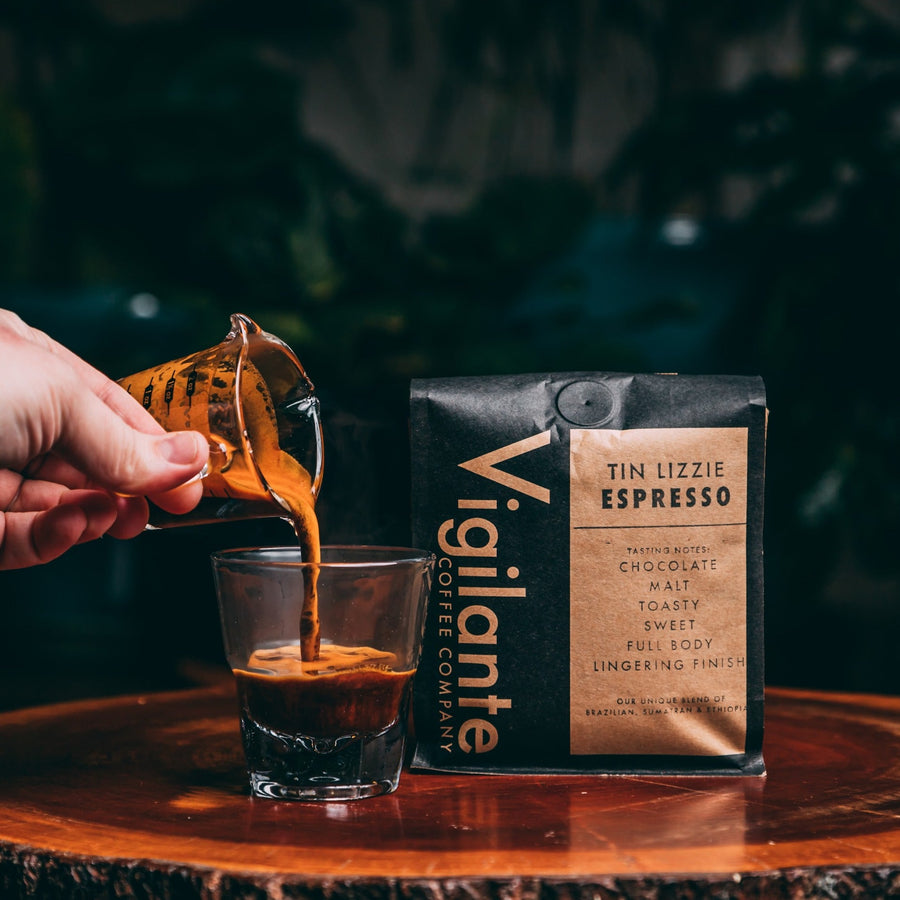Exploring the Rich Tastes of Coffee Beans: a Deep Study Espresso and Blended Coffee Beans
When you discover the abundant tastes of coffee beans, you uncover an intricate globe where each selection brings its very own personality to your cup. Understanding the origins, refining techniques, and toasting strategies can transform your coffee experience. As you navigate with the art of espresso and the imagination behind combined coffees, you'll begin to appreciate the subtleties that make each sip unique. What you'll uncover next might alter the way you appreciate your morning mixture.
The Beginnings of Coffee Beans: Exploring Terroir and Flavor Profiles
When you take a sip of coffee, you're not just taking pleasure in a drink; you're experiencing an abundant tapestry of tastes shaped by the beans' beginnings. Each region generates one-of-a-kind taste accounts affected by altitude, soil, and climate. As an example, beans from Ethiopia frequently burst with intense, fruity notes, while those from Colombia have a tendency to use a well balanced, nutty sweet taste.
As you check out various origins, you'll see just how terroir-- the ecological elements impacting a plant-- plays a vital role - Single Origin Espresso. The exact same coffee range can taste considerably different depending on where it's expanded
When you think about these elements, you start to appreciate the intricacy behind your cup. Each sip informs a tale of the land and the farmers that nurtured the beans. So, next time you indulge, think of the journey your coffee took prior to it reached your hands, and enjoy those intricate flavors that show its origin.
Understanding Espresso: The Art and Scientific Research Behind the Mixture
When you think concerning espresso, it's not almost the strong taste; it's likewise concerning the techniques that bring it to life. Comprehending just how various preparation techniques influence preference can transform your brewing experience. Allow's explore the complexities of coffee preparation and reveal the one-of-a-kind flavor accounts that make each mug unique.
Espresso Preparation Strategies
Espresso preparation is both an art and a scientific research, integrating exact techniques with a deep understanding of coffee. To start, you'll wish to choose top quality, fresh baked beans and grind them finely for excellent extraction (Single Origin Espresso). The work dimension is vital; also crude, and your espresso will be weak, too great, and it'll be bitter
The result must be a rich, luscious coffee with a lovely layer of crema on top. With practice, you'll master these methods.
Flavor Profiles Described
The world of coffee provides an abundant tapestry of flavor accounts that can elevate your coffee experience. Light roasts commonly showcase bright acidity and dynamic tastes, while dark roasts existing deeper, bolder tones.
A well-crafted mix might integrate the brilliant notes of an Ethiopian bean with the abundant, chocolatey touches of a Brazilian bean. Welcome the trip of finding espresso's diverse tastes, and you'll transform your coffee routine right into an exciting journey.
Processing Techniques: Just How They Influence Taste and Aroma
While it might seem that the origin of coffee beans is one of the most significant aspect in determining their flavor and scent, the handling techniques utilized post-harvest play an equally crucial duty. You'll locate that these methods can substantially change the last taste account of your cup.
For example, the washed process removes the fruit from the beans prior to fermentation, typically bring about a cleaner, brighter flavor. The all-natural procedure leaves the fruit undamaged throughout drying out, resulting in a sweeter, fruitier profile.
Other methods, like honey handling, strike an equilibrium, permitting some fruit mucilage to continue to be, providing a distinct complexity.
Each handling method engages with the beans' intrinsic qualities, enhancing or silencing specific flavors and scents. When you drink that espresso or combined coffee, remember that the trip from cherry to cup is influenced not simply by origin however likewise by how those beans were processed.
Toasting Techniques: Unlocking the Full Possible of Coffee Beans
Roasting strategies are vital for exposing the complete possibility of coffee beans, as they change raw, environment-friendly beans right into the fragrant, delicious coffee you enjoy. The option of roasting approach-- light, tool, or dark-- substantially influences taste accounts.
A slower roast at lower temperature levels permits for intricate flavors to develop, while a quicker roast can heighten anger. By mastering these methods, you'll disclose a globe of taste, boosting your coffee experience to new heights.
The Magic of Blended Coffee: Developing Distinct Taste Experiences
Creating a special flavor experience with mixed coffee can transform your early morning ritual into an expedition of preference. By incorporating various beans from various regions, you can reveal a symphony of flavors that raise your mug to brand-new elevations. Each mix offers a distinctive account, balancing sweet taste, body, and level of acidity to create something truly special.
When you pick a mix, you're not simply choosing a coffee; you're selecting a journey across diverse landscapes and societies. Try out different mixes allows you to discover your personal faves, whether you appreciate fruity notes or rich, chocolatey undertones.

Tasting Notes: Recognizing the Subtleties in Your Cup
As you sip your coffee, you may notice a spectrum of tastes dancing on your taste buds, each disclosing the complexities of the beans. You may taste the brilliant acidity evocative citrus or the deep, rich notes comparable to dark chocolate. The sweetness can evoke honey or sugar, balancing the overall profile wonderfully.
Pay interest to the body of the coffee-- does it feel airy and light, or is it complete and velvety? The surface, too, uses hints; a lingering aftertaste may hint at nuttiness or flower touches.

Don't fail to remember to discover the distinct qualities of various origins, as each area gives unique tastes - Single Origin Espresso. Ethiopian coffees commonly existing fruity notes, while Colombian beans could display a more spherical sweet taste. By identifying these nuances, you'll strengthen your recognition for each and every mug, raising your coffee experience to new elevations

Developing Approaches: Optimizing Flavor Removal for Every Bean
When you explore the numerous developing methods, you'll uncover that each strategy can significantly influence the flavor profile of your coffee. From French press to pour-over, each method removes various compounds, enhancing or muting specific notes. As an example, utilizing a French press permits oils to remain in the brew, developing a richer preference, while pour-over stresses quality and illumination.
Temperature level and grind dimension likewise play important duties. A coarser grind works best for chilly mixtures, while a fine grind is ideal for coffee. Explore water temperature level-- in between 195 ° F and 205 ° F-- can reveal surprise tastes, as well.
Do not ignore soaking time; a fast extraction can lead to sour notes, while over-extraction might generate bitterness. By adjusting these variables, you can maximize flavor removal and genuinely boost your coffee experience. Enjoy the trip of uncovering what technique best matches your taste buds!
Regularly Asked Concerns
What Is the Suitable Water Temperature Level for Brewing Coffee?
The suitable water temperature level for brewing coffee's between 195 ° F and 205 ° F. If you make use of water that's too warm, you'll over-extract flavors; too chilly, and you will not extract enough. Purpose for that pleasant place for the very best mixture!
Just How Does Grind Dimension Affect Coffee Flavor?
Work dimension substantially affects coffee flavor. Finer grinds remove a lot more flavors and oils, causing a bolder preference, while coarser grinds yield a lighter flavor. Adjusting work dimension helps you achieve your preferred coffee profile.
Are There Wellness Benefits Surrounding Alcohol Consumption Coffee?

What Is the Difference In Between Arabica and Robusta Beans?
Arabica beans are click for more smoother and sweeter, typically including fruity flavors, while robusta beans are stronger with a bitter taste and greater high levels of caffeine web content. You'll observe these differences in aroma and developing experience.
How Can I Store Coffee Beans for Quality?
To save coffee beans for freshness, maintain them in an airtight container, far from moisture, warm, and light. You'll keep their flavor longer if you only grind what you need right before brewing.
Discovering the Rich Flavors of Coffee Beans: a Deep Dive Into Coffee and Blended Coffee Beans.
When you discover the rich flavors of coffee beans, you uncover a complex world where each variety brings its own character to your mug.When you take a sip of coffee, you're not simply delighting in a drink; you're experiencing a rich tapestry of tastes formed Read Full Article by the beans' beginnings.Roasting techniques are necessary for exposing the full possibility of coffee beans, as they transform raw, environment-friendly beans right into the fragrant, flavorful coffee you delight in.As you drink your coffee, you could observe a spectrum of tastes dancing on your taste buds, each revealing the complexities of the beans.